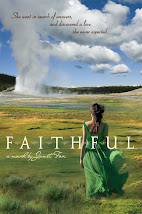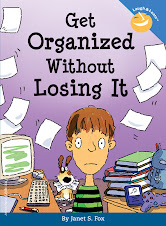Today I have the honor of hosting my Vermont College of Fine Arts fellow grad Andy Sherrod. Andy is not only a talented writer and all-around nice person, he's also made a close study of how boys read and why many don't, and how we as writers can appeal to so-called "reluctant readers."
Here's his research - I'd love to hear what readers think!
It’s Not Just About Gender
Many boys lose interest in voluntary
reading around the age of ten or twelve earning them the label “reluctant
reader.” I prefer “aliterate reader.” An aliterate reader is one who CAN read
but chooses not to engage in voluntary reading because he thinks books are
boring. Here’s how I know:
A national survey conducted by the Young
Adult Library Services Association asked boys, an average age of 14, to list
their top obstacles to reading.
39.9% said reading was no fun.
29.8% said they were too busy.
11.1% liked other activities better.
7.7% said “I can’t get into the stories.”
4.3% said they just weren’t good at it.
The top four responses, a whopping
88.5%, are essentially saying “books are boring.” Then along came Harry Potter…Hmm,
they aren’t reluctant after all, they are aliterate.
So what makes for a good boy book?
Many believe that a good boy book MUST
have a male protagonist. One study shows that, yes, boys prefer it by 61.7% but
there is another dynamic at work. In a study by researchers at the University
of Georgia, preschool children were read four stories.
1.
A male
protagonist engaged in a stereotypically male activity (playing with trains).
2.
A female
protagonist engaged in a stereotypically female activity (playing with dolls).
3.
A male
protagonist playing with dolls.
4.
A female
protagonist playing with trains.
The boys’ number one pick was the male
protagonist playing with trains. However, coming in second was the GIRL playing
with trains pointing to the fact that the ACTIVITY is as important as the
gender of the main character.
In an article by Thomas Newkirk entitled
“Misreading Masculinity: Speculations on the Great Gender Gap in Writing”, he
cites research that analyzes the reading and writing differences between boys
and girls. Here’s the conclusion:
In their own writing, girls keep their
main characters in familiar surroundings, they are connected to a community
(friends), and the conflict involves relationships.
Boys, in their own writings sent their
protagonists “out there” away from the familiar, they acted alone (sometimes in
isolation) to conquer physical challenges.
Many children’s books written today have
both genders acting in concert with a friend or in groups, staying in a
familiar place and dealing with relationship issues. No wonder so many boys
think books are boring.
Here’s the take-home message. When
selecting a book for an aliterate boy reader, do NOT consider the gender of the
protagonist ONLY. Choose books where the main character:
1.
Acts alone
2.
Takes off
somewhere
3.
Must overcome
physical challenges.
If you do, you have a better chance of
capturing the interest of an aliterate reader.





















































2 comments:
I read this post when it first came up, and just reread it again. Love the data and analysis! Thanks for the information!
Thanks, Kiri! Andy is super-smart - he did his MFA thesis on what boys read and why. Great stuff there.
Post a Comment